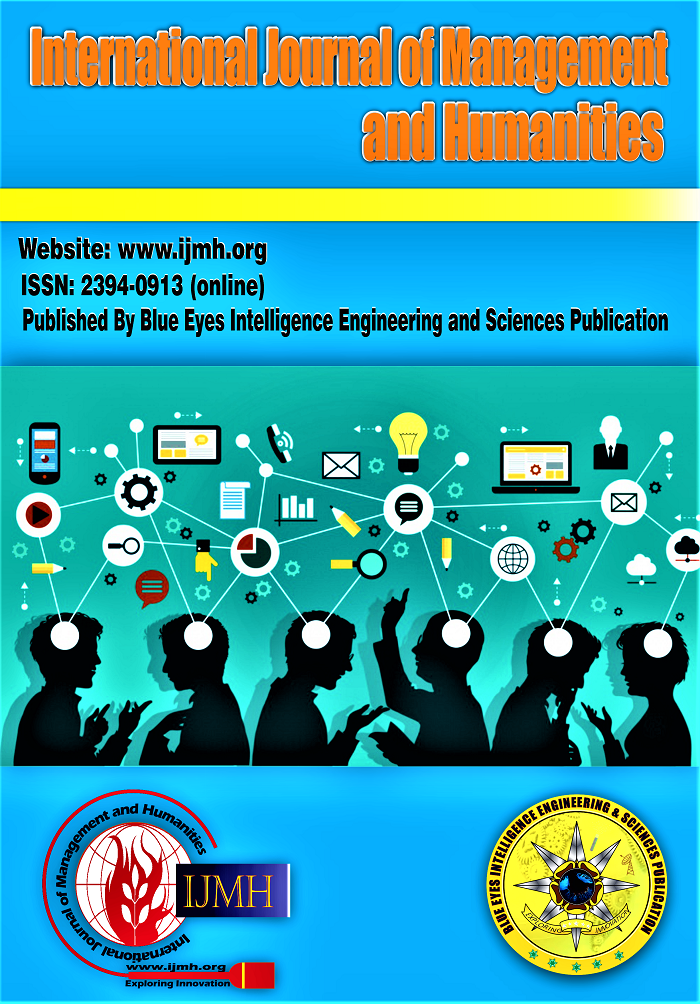Leveraging AI to Transform Online Higher Education: Focusing on Personalized Learning, Assessment, and Student Engagement
Main Article Content
Abstract
The proliferation of online higher education has underscored the need for innovative approaches to enhance student learning, engagement, and success. This paper explores the transformative potential of artificial intelligence (AI) in revolutionizing online education. By focusing on personalized learning, AI-driven assessment, and student engagement, this research investigates how AI technologies can create tailored educational experiences, optimize learning outcomes, and foster a dynamic online learning environment. The study delves into the implementation of AI-powered tools, such as intelligent tutoring systems, adaptive learning platforms, and predictive analytics, to address individual student needs, provide timely feedback, and promote active participation. Through a comprehensive analysis of the existing literature and emerging trends, this paper aims to identify key challenges, opportunities, and best practices for leveraging AI to optimize online higher education, ultimately contributing to improved student satisfaction, retention, and academic achievement.
Downloads
Article Details
Section
How to Cite
References
Allen, I. E., & Seaman, J. (2017). Digital learning compass: Distance education enrollment report 2017. Babson Survey Research Group.
Muilenburg, L. Y., & Berge, Z. L. (2005). Student barriers to online learning: A factor analytic study. Distance Education, 26(1), 29-48. https://doi.org/10.1080/01587910500081269
VanLehn, K. (2011). The relative effectiveness of human tutoring, intelligent tutoring systems, and other tutoring systems. Educational Psychologist, 46(4), 197-221. https://doi.org/10.1080/00461520.2011.611369
Baker, R. S., & Inventado, P. S. (2014). Educational data mining and learning analytics. In J. A. Larusson & B. White (Eds.), Learning analytics: From research to practice (pp. 61-75). Springer. https://doi.org/10.1007/978-1-4614-3305-7_4
Shermis, M. D., & Burstein, J. (2013). Handbook of automated essay evaluation: Current applications and new directions. Routledge. https://doi.org/10.4324/9780203122761
Okonkwo, C. W., & Ade-Ibijola, A. (2021). Chatbots applications in education: A systematic review. Computers & Education: Artificial Intelligence, 2, 100033. https://doi.org/10.1016/j.caeai.2021.100033
Drachsler, H., Hummel, H. G. K., & Koper, R. (2015). Personal recommender systems for learners in lifelong learning networks: The requirements, techniques and model. International Journal of Learning Technology, 3(4), 404-423. https://doi.org/10.1504/IJLT.2008.019376
Holmes, W., Bialik, M., & Fadel, C. (2019). Artificial Intelligence in Education: Promises and Implications for Teaching and Learning. Center for Curriculum Redesign.
Huang, R., Tlili, A., Chang, T.-W., & Zhang, G. (2020). Disrupted classes, undisrupted learning during COVID-19 outbreak in China: Application of open educational practices and resources. Smart Learning Environments, 7, Article 19. https://doi.org/10.1186/s40561-020-00125-8
Jordan, M. I., & Mitchell, T. M. (2020). Machine learning: Trends, perspectives, and prospects. Science, 349(6245), 255-260. https://doi.org/10.1126/science.aaa8415
Liu, Q., Cui, Z., & Zhang, Y. (2021). Application of artificial intelligence in education. IEEE Access, 9, 17587-17596. https://doi.org/10.1109/ACCESS.2021.3053041
Popenici, S. A. D., & Kerr, S. (2017). Exploring the impact of artificial intelligence on teaching and learning in higher education. Research and Practice in Technology Enhanced Learning, 12(1), 22. https://doi.org/10.1186/s41039-017-0062-8
Westermann, A., Roddiger, S., & Eberle, J. (2020). How AI-based assistants can improve the learning experience in higher education. In Proceedings of the European Conference on e-Learning (ECEL) (pp. 438-444). Academic Conferences and Publishing International Limited.
Xu, Z., & Wang, S. (2021). AI in online learning: The impact on student motivation and engagement. Journal of Educational Technology Development and Exchange (JETDE), 14(1), 51-62.
Zawacki-Richter, O., & Qayyum, A. (Eds.). (2020). Systematic review of research on artificial intelligence applications in higher education: Emerging themes and future research directions. Springer. https://doi.org/10.1186/s41239-019-0171-0
Zawacki-Richter, O., Marín, V. I., Bond, M., & Gouverneur, F. (2019). Systematic Review of Research on Artificial Intelligence Applications in Higher Education – Where are the Educators? International Journal of Educational Technology in Higher Education, 16(1), 39. https://doi.org/10.1186/s41239-019-0171-0
Pane, J. F., Griffin, B. A., McCaffrey, D. F., & Karam, R. (2017). Effectiveness of Personalized Learning: Findings from Recent Research. RAND Corporation.
Chen, G., Cheng, W., & Li, Z. (2020). A Personalized Learning Approach Based on Online Learning Resources. IEEE Access, 8, 92349-92357.
Drachsler, H., & Kalz, M. (2016). The MOOC and Learning Analytics Innovation Cycle (MOLAC): A Reflective Summary of Ongoing Research and its Challenges. Journal of Computer Assisted Learning, 32(3), 281-290. https://doi.org/10.1111/jcal.12135
Siemens, G., & Long, P. (2011). Penetrating the fog: Analytics in learning and education. EDUCAUSE review, 46(5), 30-40.
Dillenbourg, P. (1999). What do you mean by collaborative learning? In P. Dillenbourg (Ed.), Collaborative-learning: Cognitive and computational approaches (pp. 1-19). Oxford: Elsevier.
Bacca, J., Baldiris, S., Fabregat, R., Graf, S., & Kinshuk. (2014). Augmented reality trends in education: A systematic review of research and applications. Educational Technology & Society, 17(4), 133-149.
Al-Mahdawi, E. (2022). An Overview on Internationalisation within the United Kingdom Higher Education. In International Journal of Management and Humanities (Vol. 8, Issue 6, pp. 7–11). https://doi.org/10.35940/ijmh.f1423.018622
Kamalakar, Dr. G., & Kamala, Dr. K. (2023). New Dimension in Higher Education in India. In Indian Journal of Social Science and Literature (Vol. 1, Issue 4, pp. 27–33). https://doi.org/10.54105/ijssl.e1027.061422
Nurazlina Md Sanusi, Massila Kamalrudin, Syahida Mohtar, Student Engagement using Learning Management System in Computer Science Education. (2019). In International Journal of Recent Technology and Engineering (Vol. 8, Issue 2S11, pp. 743–747). https://doi.org/10.35940/ijrte.b1121.0982s1119
Al Kindi, I., Al Khanjari, Z., & Al Salmi, J. (2020). Managing the Triangular Bond of the EBP for SQU Students Through the Proposed Test Model. In International Journal of Engineering and Advanced Technology (Vol. 10, Issue 1, pp. 391–400). https://doi.org/10.35940/ijeat.a1914.1010120
Dr. Chitra S. (2024). Evaluating the Role of STEM Education in Empowering Secondary School Students. In International Journal of Emerging Science and Engineering (Vol. 12, Issue 8, pp. 7–12). https://doi.org/10.35940/ijese.i2581.12080724





